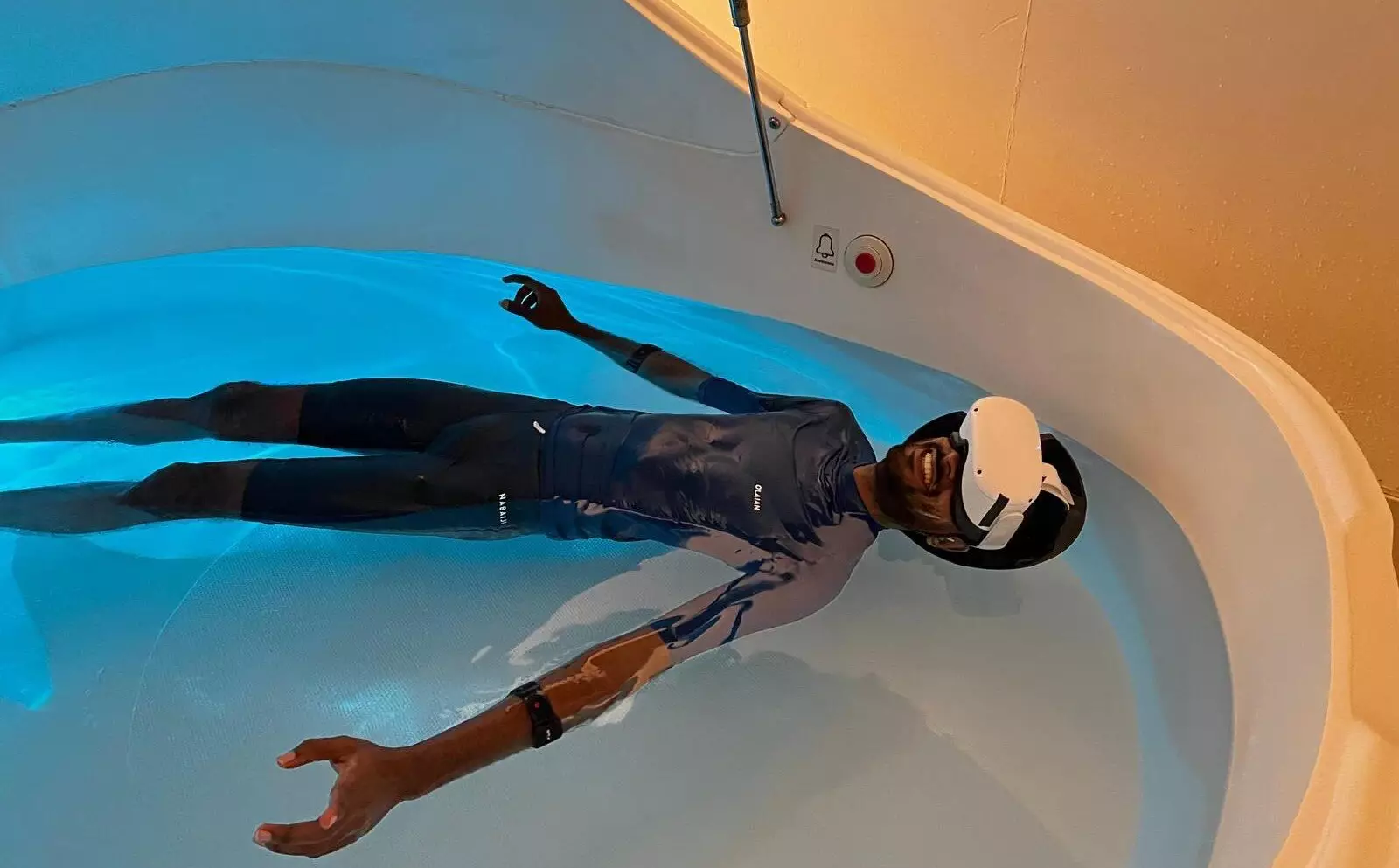Aquaphobia, the extreme fear of water, can severely hinder individuals from participating in enjoyable recreational activities such as swimming or even taking a bath. Researchers at Monash University have approached this challenge with innovative technology by developing a unique extended reality (XR) system that integrates water-based virtual environments with floatation tanks. This initiative, discussed in a recent study published in the Proceedings of the CHI Conference on Human Factors in Computing Systems, represents a significant step forward in therapeutic interventions for individuals struggling with this phobia.
This interdisciplinary approach is spearheaded by a team from the Faculty of Information Technology’s Exertion Games Lab, aiming to marry the therapeutic aspects of exposure therapy with engaging interactive technologies. By using a floatation tank, the researchers create an immersive environment where participants can confront their fears in a controlled manner, ideally leading to a reduction in anxiety associated with water.
At the core of the XR system is a carefully crafted virtual landscape that participants explore while floating in a tank filled with water. Upon donning a VR headset, individuals find themselves in a vibrant underwater world guided by a virtual character dubbed the “water spirit.” This character acts not just as a guide but also as a reassuring presence, providing verbal prompts that encourage relaxation and enjoyment, thereby reducing feelings of fear.
The experience is carefully structured into three phases, each designed to incrementally increase the participant’s comfort with water. The initial stages focus on gentle exposure, gradually introducing elements of challenge. As participants progress, they are required to control their physical responses—heart rate and breathing—through movement and calming techniques underscored by the virtual environment.
The term “hands-free interactions” aptly describes how this system operates, as advanced sensors embedded in the headset monitor participants’ physiological reactions without necessitating cumbersome controls. This critical feature enables participants to dedicate their focus entirely to the immersive experience instead of worrying about the mechanics of engagement. For someone grappling with aquaphobia, this interactive journey is less about confrontation and more about gentle acclimatization to the water environment.
The progressive design mirrors conventional exposure therapy’s methodology, where facing fears step-by-step can significantly enhance efficacy. The research indicates that such a method can transform how individuals perceive their aquatic fears, making them less daunting and more manageable.
A critical evaluation of the research involved twelve participants with self-reported aquaphobia. The study meticulously tracked physiological responses by measuring heart rates and other indicators of anxiety. The results demonstrated a clear trend: individuals enjoyed reduced anxiety levels when immersed in the XR system. This was particularly noticeable in sessions where participants floated in the tank without any technological aid.
According to lead researcher Maria Montoya, the ultimate goal is to bridge the gap between fear and enjoyment of water-based scenarios. She notes a compelling opportunity for interactive systems to engage individuals in water-related activities positively. The successful interplay of technology and therapy not only introduces a novel treatment opportunity but also offers a hopeful outlook for those affected by water fears.
The findings from this study lay the groundwork for future research into aquaphobia treatment and the application of technology in psychological therapy. While further experimentation and larger sample sizes will be necessary to validate these initial results, the potential for extending these techniques to other phobias and fears stands out prominently.
The marriage of technology and therapeutic practices showcased by Monash University researchers illuminates a promising avenue for addressing phobias such as aquaphobia. By blending playful, interactive experiences within an extended reality framework, they are not only providing a unique therapeutic option but also inspiring a reevaluation of how we confront fears in our increasingly digital age. With more rigorous studies, this innovative approach could redefine treatment landscapes for various forms of anxiety.


Leave a Reply